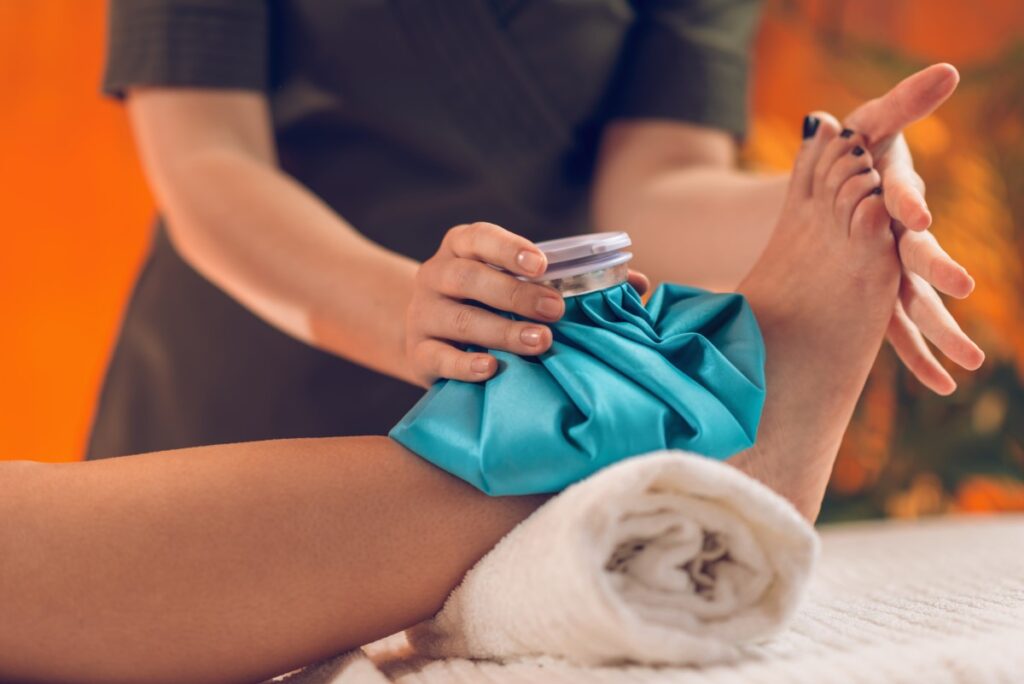Introduction
Many people suffer from knee and ankle pain at some point in their lives. It can be a debilitating experience, affecting daily activities and overall quality of life. Conditions like rheumatoid arthritis, overuse injury, or an injured joint can contribute to this discomfort. Specific issues with ankle joints or the lower leg may also lead to chronic pain. Understanding the causes and learning how to manage this type of pain is essential for those suffering from it. This blog will explore various strategies for relief from knee and ankle pain, offering practical advice and insights to help you take control of your discomfort.
Understanding Knee and Ankle Pain
Knee and ankle pain can arise from various causes, including injuries, arthritis, and other underlying health conditions. Pain from ankle to knee can often be traced back to overuse or strain in sports and recreational activities. In some cases, ankle and knee pain on same leg might indicate a more serious underlying issue. It’s important to consult with a healthcare provider to determine the root cause of the pain and begin appropriate treatment.
Among the types of pain that contribute to discomfort in the knee and ankle, chronic pain, severe pain, and joint pain stand out. These forms of pain can significantly impact daily activities and lead to further complications if not addressed. Instances of ankle and knee pain on the same leg might signal more complex underlying issues. Additionally, conditions related to specific body parts, such as the Achilles tendon and heel bone, can greatly affect knee and ankle pain. Proper care and attention to these areas can alleviate discomfort and prevent further injury.
How do you relieve ankle and knee pain?

Relieving ankle and knee pain requires medical intervention and self-care. Over-the-counter pain relievers and rest can help alleviate immediate discomfort. For more severe pain, physical therapy and rehabilitation might be necessary. Specific exercises can also strengthen the affected areas, providing long-term relief from knee pain. The best action is to visit a healthcare provider for a proper diagnosis and treatment plan.
Engaging with a skilled physical therapist can provide personalized treatment plans that specifically target the areas of discomfort. Physical therapy is often a critical step in recovery, helping patients regain mobility and strength. Surgical intervention may be required to address underlying issues causing the pain. A proper diagnosis from a medical professional is crucial to determining the right course of action, whether it includes physical therapy, surgery, or other forms of treatment.
Lifestyle and Prevention Strategies
Preventing ankle to knee pain starts with adopting a healthy lifestyle. Regular exercise, wearing proper footwear, and avoiding activities that strain the joints can help prevent pain. For those who engage in sports or heavy physical work, using proper techniques and taking breaks are crucial to avoid overuse injuries. Learning to listen to your body and stopping activities when you feel discomfort can be an effective strategy to prevent long-term problems.
Beyond these strategies, embracing a holistic approach to wellness can be beneficial. Incorporating practices like yoga and mindfulness exercises can enhance joint flexibility and reduce stress, both of which are vital in preventing ankle and knee pain. Staying hydrated, maintaining a balanced diet, and seeking regular check-ups with healthcare professionals can further support overall joint health. Tailoring these strategies to your unique needs and lifestyle will create a strong foundation for pain prevention and promote overall well-being.
Nutritional Support for Joint Health

Eating a balanced diet that supports joint health can be another way to manage knee and ankle pain. Foods rich in omega-3 fatty acids, calcium, and vitamin D can be beneficial. Avoiding inflammatory foods and opting for a diet promoting overall health can be vital to managing pain.
Along with the mentioned nutrients, incorporating antioxidants like vitamin C, vitamin E, and selenium can further protect the joints from damage. Herbs such as turmeric and ginger have anti-inflammatory properties and can be included in your daily meals. Hydration also plays a crucial role in joint health, as water helps to keep the joints lubricated. Collaborating with a dietitian or nutritionist who specializes in joint health can provide personalized dietary plans to enhance comfort and mobility. More information on dietary recommendations for joint health can be found on the National Institute on Aging’s website.
Physical Therapy and Rehabilitation
Physical therapy and rehabilitation play a vital role in overcoming knee and ankle pain. Therapists can design a tailored program to improve the affected areas’ flexibility, strength, and stability. Exercises like kneeling thoracic extension can be particularly effective. Consistency and commitment to the prescribed routine are essential for successful rehabilitation. More information about physical therapy can be found on the American Physical Therapy Association’s website.
Preventing Recurrence
Preventing the recurrence of knee and ankle pain requires ongoing care and awareness. Regular check-ups with a healthcare provider, maintaining a healthy lifestyle, and avoiding risk factors can help prevent future issues. Education about your specific condition and staying informed through credible sources like the Centers for Disease Control and Prevention (CDC) can empower you to manage your condition proactively.
Conclusion
Knee and ankle pain can be a complex and challenging issue. Understanding the causes, seeking proper medical treatment, and adopting lifestyle changes are key to managing and preventing this pain. If you are experiencing pain in these areas, taking proactive steps to address the discomfort is crucial. Following the strategies outlined in this blog can lead you to a more comfortable and active life. Professional medical advice tailored to your situation is always the best course of action. Contact healthcare providers and physical therapists for the support and treatment you need.
If you need specialized care and rehabilitation, don’t hesitate to contact Alliance Regen and Rehab. Our dedicated team of professionals is here to provide comprehensive support for your knee and ankle pain. Whether through targeted physical therapy or cutting-edge regenerative techniques, we’ll help you take control of your health and get back to the activities you love. Visit our website to learn more and schedule an appointment today!


